By Patrick J. Chaisson
Shortly after 11 am on August 22, 1942, the roar of aircraft engines shattered the stillness over Henderson Field, Guadalcanal. Weary Marines looked up from their foxholes to see what was causing this racket, and then broke into wild cheers. As the formation of five long-nosed fighters circled to land, all below could read the words “U.S. ARMY” marked on each plane’s wings.
Reinforcements had come! The 13,000 Leathernecks occupying the embattled island of Guadalcanal in the Solomons, codenamed Cactus, were no longer alone. Army Air Forces pilots of the 67th Fighter Squadron and their sleek P-400 Airacobras had arrived to help the Marines hold this strategic island base against vicious Japanese counterattacks. For weeks enemy bombers had flown almost unopposed over the American positions, and these heavily armed Army interceptors seemed just the solution to checking the Japanese raids.
Yet when the 67th got into combat its pilots discovered to their horror that the Airacobra could not even climb high enough to reach those bombers. Down low, nimble Japanese Mitsubishi Zero fighters chewed their sluggish P-400s to bits. Marine commanders on Cactus called the Airacobra “practically worthless,” and whispers of cowardice surrounded the 67th for running away during air attacks.
Within weeks, however, the brass changed its tune. While hopelessly outclassed in air-to-air combat, the P-400 soon found its niche as a ground attack plane. Marine riflemen came to rely on the 67th’s hard-hitting fighter bombers to destroy enemy troop formations and defensive fortifications. The Airacobras also proved lethal against supply-laden Japanese barge convoys.
Flying as many as five missions per day, the 67th Fighter Squadron played a key role in the American victory on Guadalcanal. Its pilots surmounted many obstacles in doing so, and their story of endurance and ingenuity began long before the first P-400s landed at Henderson Field.
America’s “Last Line of Defense”
In the weeks following Pearl Harbor, the full extent of America’s unpreparedness for war became shockingly apparent. American outposts across the Pacific at Guam and Wake Island fell swiftly to the Japanese juggernaut, while Allied forces in the Philippines fought a brave but doomed delaying action throughout the spring of 1942. The enemy was everywhere, or so it seemed to those officers in Washington whose task it was to stop the Japanese.
Key to the Americans’ plan was a “last line of defense” stretching 2,000 miles between Hawaii and bases in Australia and New Zealand to encompass such strategic islands as Fiji, Samoa, and New Caledonia. Forces stationed on these bastions would help keep open vital sea lanes and deny Japan their use.
But the Allies had to get there first. During January 1942, hastily organized shiploads of U.S. Marines and soldiers set sail for the South Pacific. Army Air Corps flying squadrons went along to provide air cover for these occupying troops.
“Fighting Cocks”
One such unit was the 67th Pursuit Squadron, nicknamed the “Fighting Cocks,” stationed at Harding Army Airfield in Baton Rouge, Louisiana. The Fighting Cocks were understrength, like most Air Corps outfits at the time, and equipped with just a few obsolete Seversky P-35 fighters. When orders arrived to prepare for overseas movement, the 67th had barely 50 percent of its full complement of pilots on hand, and most of these men were fresh out of flight school.
Fortunately, the squadron was led by two experienced lieutenants who together embodied the soul of the Fighting Cocks. Dale “D.D.” Brannon, an Ohio native whose lanky six-foot frame almost disqualified him from flying fighters, held the unit together while a parade of higher ranking commanders came and went. And then there was Oregonian John A. Thompson, handsome, skilled, and fearless under fire. Brannon and Thompson made an unbeatable team but could not imagine the challenges they would have to overcome on a primitive, dangerous island halfway around the world.
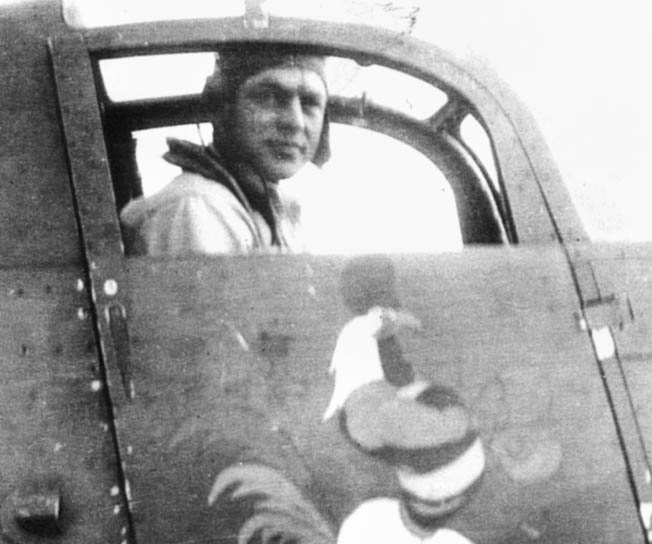
Introduced to the Airacobra
On January 23 1942, the Fighting Cocks embarked from Brooklyn, New York, aboard the Army transport ship Thomas A. Barry, a converted passenger liner. Their trip to the South Seas was no pleasure cruise. The vessel was dangerously overcrowded, and a shortage of fresh water meant each man received one canteen per day for drinking, washing, and shaving. It took the Barry five weeks to reach Australia, where the squadron recovered from its unpleasant journey while headquarters figured out what to do with the 67th.
The answer came on March 5, 1942. The 67th’s destination was New Caledonia, a French possession 750 miles east of Australia. The men embarked the next day, squadron personnel sailing in one troop ship while another freighter carried their as yet unseen aircraft. No one knew what type of fighter the squadron would fly, only that 47 of them had been disassembled and put in crates for the long journey from the United States.
The mystery of the crated airplanes was solved at the port of Nouméa when 67th maintenance personnel unloaded them onto the docks. Inside were 45 P-400 fighters and two P-39Fs, built by the Bell Aircraft Corp. of Buffalo, New York. It was the first time most of the Fighting Cocks had ever seen either plane.
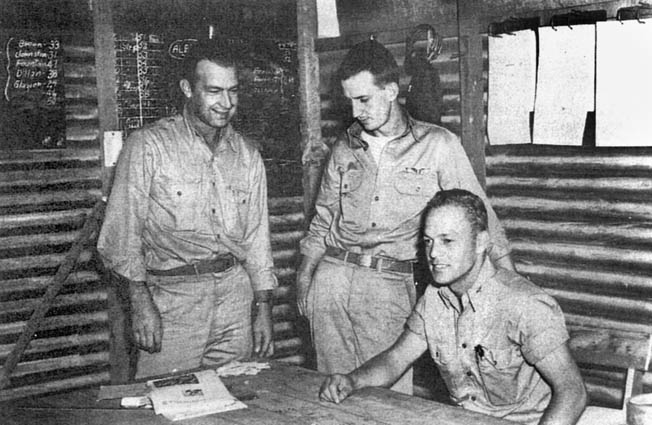
The Flawed P-400 Airacobra
An export version of the Airacobra, the tricycle-geared P-400 was first offered to the British Royal Air Force as part of the Lend-Lease program. The Royal Air Force found the little Bell fighter’s high altitude performance unacceptable and rejected it for combat service. The U.S. Army Air Corps, taking anything that flew, quickly requisitioned the planes for duty against Japan.
The Air Corps in 1941 considered the Airacobra a state-of-the-art interceptor. Its 1,150-horsepower engine sat mid-fuselage behind the pilot, leaving room for a heavy cannon in the nose. The P-400 model came equipped with a 20mm cannon, while P-39 variants mounted the larger 37mm. Four .30-caliber and two .50-caliber machine guns rounded out the Bell’s impressive armament. It could also carry a 500-pound bomb on a centerline hard point.
The P-400, however, came with several flaws. It lacked a supercharger, which meant the Airacobra could not reach the altitudes at which Japanese bombers routinely flew. The Bells unloaded at Nouméa were also equipped with British high-pressure oxygen systems, incompatible with the low-pressure canisters used on American aircraft.
Worse, no one could find a manual telling the airmen on New Caledonia how to put these Airacobras together. The 67th deployed with 10 sets of mechanics’ hand tools but lacked the special equipment necessary to assemble and test a modern fighter aircraft.
Troubles With the Airacobras
The squadron’s first problem was to get the crated P-400s off the docks and to the nearest airfield. Using a borrowed truck, crews hauled each 10,000-pound shipping container 35 miles over dirt roads to a newly built airstrip at Tontouta. One trip took eight hours to accomplish, but by working around the clock all 47 Airacobras were delivered safely to the Fighting Cocks’ new home within a week.
Then the process of reassembly began. Master Sergeant Robert Foye, a veteran line chief with the 67th, recorded his impressions of that time: “Assembly rig built from old timbers picked up around Tontouta … no replacement parts. Every fifth ship was designated ‘spare parts’ before it was uncrated … no technical orders or manuals of instruction but started producing airplanes at the rate of 1.5 a day after the first week.”
Foye continued: “Frequent troubles. One prop was missing from crate. Sometimes vital fuel and pressure lines found to be mysteriously plugged with Scotch tape. One airplane had electrical circuit hooked up at factory evidently by a maniac. Press flap switch and wheels would retract. Press wheel switch and guns would fire. Took days to straighten it out.”
Conditions at Tontouta taxed the crews’ endurance as well. “Rain, mud, and mosquitos,” Foye noted. “Work day was from 5 am until dark … not a growl from any man.” Poor food and unsanitary living spaces soon brought on a wave of dysentery, yet the Fighting Cocks labored day after day to get their Bell fighters ready for combat despite insects, disease, and the occasional Japanese air raid.
Preparing For Combat With the Japanese
On March 28, 1st Lt. D.D. Brannon—who along with John Thompson was one of two 67th pilots who had ever flown an Airacobra—made the first successful P-400 test flight over New Caledonia. At last the planes were airworthy, but plenty of hard work remained. Brannon and Thompson began checking out their novice aviators in the tricky Bell interceptors, training them to fly and fight as a team.
Morale soared on May 1, when the Air Corps reorganized as the United States Army Air Forces. This meant the 67th got a new name as well. The Fighting Cocks were no longer a “pursuit squadron” but now called themselves the 67th Fighter Squadron. They passed the spring and summer patrolling New Caledonia in their camouflaged P-400s, training for the battles that everyone knew were just over the horizon.
Japan’s offensive plans had been stymied with the American strategic victory at the Battle of the Coral Sea in May and in an even more decisive setback at Midway a month later. In both encounters, American airpower had arrested the enemy’s momentum and kept Japanese forces from invading key Allied bases in New Guinea, Australia, New Zealand, and even potentially Hawaii. Shipping lanes appeared safe as well for the time being.
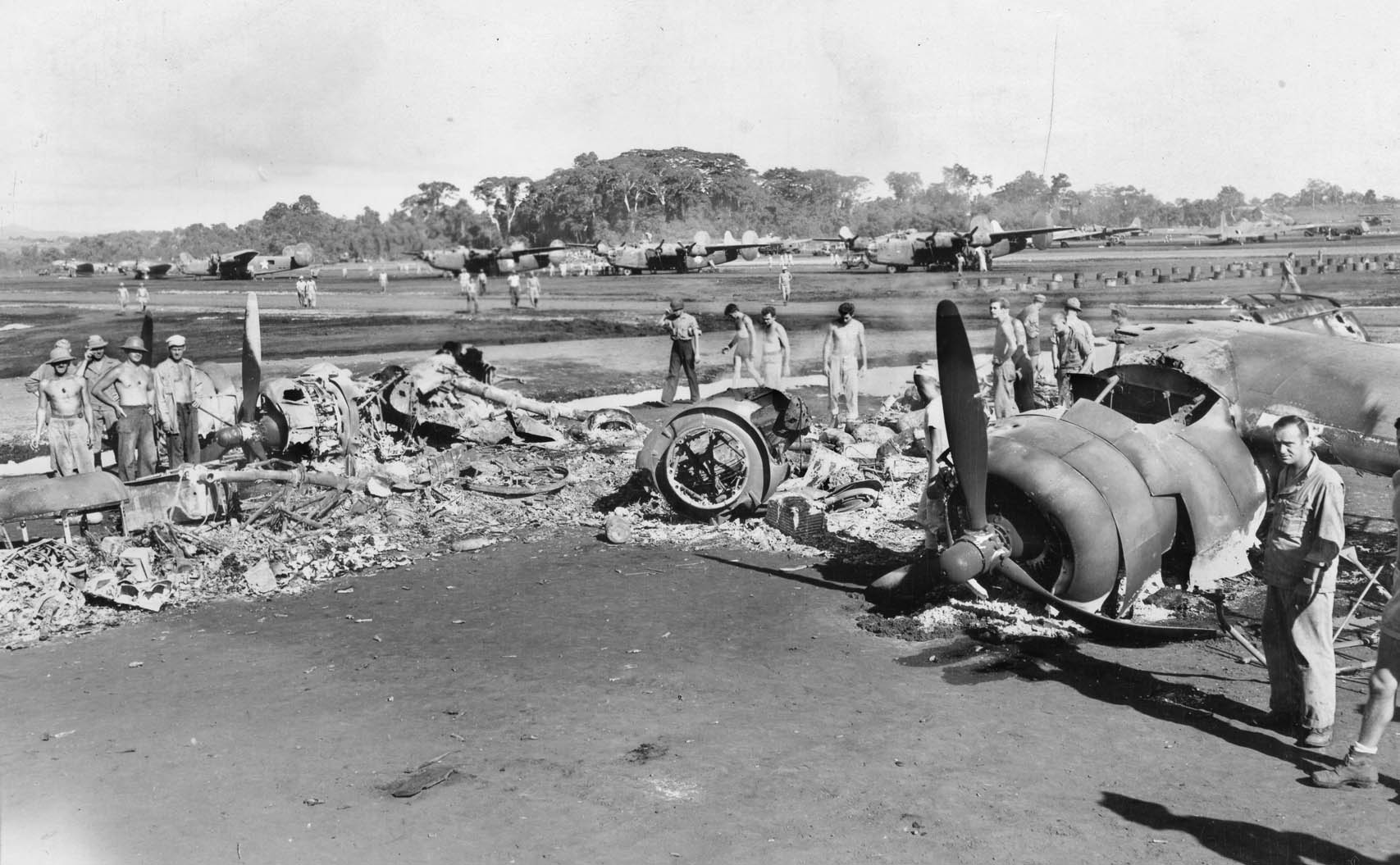
Vandegrift’s Operation Watchtower
Reconnaissance flights over the nearby Solomon Islands brought troubling news. Roaming patrol planes had discovered a new airstrip being built on Japanese-held Guadalcanal, only 560 nautical miles from U.S. installations on Espiritu Santo. From Guadalcanal, land-based bombers could threaten vital supply lines and potentially cut Australia off from its American allies.
Guadalcanal had to be taken, and soon. The job went to Marine Maj. Gen. Alexander A. Vandegrift and his 1st Marine Division (Reinforced), then training in New Zealand. Within a matter of five weeks Vandegrift’s Marines planned, rehearsed, and executed Operation Watchtower, the first major offensive landing of American forces in World War II.
The invasion, occurring on August 7, 1942, did not go smoothly. While American troops easily captured the partially completed airstrip on Guadalcanal, enemy garrisons occupying the neighboring islands of Tulagi, Gavutu, and Tanambogo resisted fiercely. Later that night as the transports unloaded, a screening force of U.S. and Australian warships met with disaster off Savo Island at the hands of the Imperial Japanese Navy. This defeat caused American naval commanders to immediately stop unloading supplies and send the fleet off for safer waters.
The 1st Marine Division had been abandoned. While most of Vandegrift’s men were on the beach, less than half of their artillery, heavy equipment, and supplies had made it ashore before the transports fled. The Leathernecks were left with a 10-day load of ammunition and so little food that for weeks they subsisted on abandoned enemy rations of canned fish and rice.
Positioned on Henderson Field
With the U.S. Navy’s unexpected departure, Japan controlled both the sea and the air around Guadalcanal. Finishing the runway became Vandegrift’s number one priority, since for the time being it was the only way to receive supplies and evacuate the wounded. Vandegrift also knew that warplanes based on Guadalcanal could strike back at the enemy bombers and surface ships then harassing his positions.
Henderson Field, named after Major Lofton R. Henderson, a Marine aviator killed during the Battle of Midway, was declared operational on August 19. The next day, 12 Douglas SBD Dauntless dive bombers and 19 Grumman F4F Wildcat fighters arrived at Henderson Field from the escort carrier USS Long Island. They were the first of the “Cactus Air Force,” a term used to describe the Marine Corps, Navy, and Army aviators defending Guadalcanal during its darkest hours.
Meanwhile, on New Caledonia the 67th Fighter Squadron received orders to move to the Solomons. D.D. Brannon, now a captain, led five P-400s on a three-day overwater hop, first to Efate, then Espiritu Santo, and finally Cactus on August 22. The 560-mile flight from Espiritu Santo to Guadalcanal pushed the Airacobras’ maximum range, despite their being fitted with belly tanks. Two Boeing B-17 Flying Fortress bombers escorted the diminutive Bell fighters part of the way to their destination, ready with life rafts in case a fighter was forced to ditch from fuel exhaustion.
Once parked on Henderson Field, the Army pilots surveyed their new surroundings. Gunfire was clearly audible from the Marines’ perimeter, a half mile from their hangar. Nearby stood a ramshackle old building, nicknamed the Pagoda, which served as the Cactus Air Force’s command post. Leathernecks there told Brannon and his men to watch for a black flag being raised on an adjacent flagpole; this was the field’s air raid warning signal.
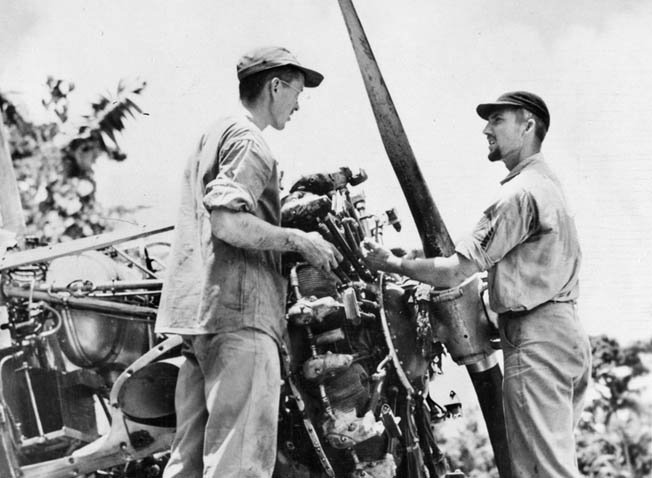
Japanese bombers normally paid Guadalcanal a visit every day around noon, “Tojo Time” to the wisecracking Marines. For weeks these high-flying intruders, operating from bases on Rabaul 565 miles to the northwest, bombed the Americans with impunity. The arrival of the Marine Wildcats promised to equalize matters. Captain Brannon’s pilots hoped they would get a crack at those bombers as well.
First Night on Cactus
The first night on Cactus was a memorable one for the men of the 67th. Camped in a palm grove 200 yards from the front lines, the Fighting Cocks experienced sniper fire, biting insects, and other jungle dangers. They also had a visit from “Washing Machine Charlie,” one of several enemy aircraft appearing overhead throughout the night to randomly drop bombs on the American perimeter. No one, including the 67th’s ground echelon which had arrived by transport ship that evening, got much sleep.
August 23 was spent learning the ropes, which meant dawn to dusk patrols around Guadalcanal’s coast. No enemy aircraft were spotted. Marine scout planes did, however, detect a large number of troop transports and warships steaming down “The Slot,” a body of water running through the Solomon Islands, from Japanese bases near Rabaul. This was the infamous “Tokyo Express,” and the first of many convoys delivering troops determined to expel the Americans from their tenuous hold on Guadalcanal.
Henderson Field felt the long arm of Japanese air power the next afternoon. Pilots and ground crews of the 67th were working on their aircraft when up went the black alert flag. Dashing madly for their Airacobras, Captain Brannon and 2nd Lt. Deltis H. Finscher managed to get airborne just as a string of bombs hit the field. While Marine F4Fs shot down eight of nine enemy bombers, Brannon and Finscher happened across a careless Zero at low level and flamed it. The 67th was on the scoreboard.
Yet, when SBDs from Cactus joined carrier-based Navy aircraft to fight the Battle of the Eastern Solomons on August 24-25, the short-legged P-400s stayed close to home. Patrolling at medium altitude, the Fighting Cocks never quite knew whether those distant spots they kept seeing meant enemy aircraft or were just an illusion caused by their oxygen-deprived brains.
“Tojo Time”
On August 26, the black flag signaling “Tojo Time” ran up the pole, causing another frantic scramble for takeoff. While a dozen Wildcats scooted upstairs to engage the Japanese, four of Brannon’s Airacobras wallowed around thousands of feet below the action. They returned to Henderson, guns unfired, finding the airstrip plastered with bombs and the fuel dump ablaze. The disappointed Fighting Cocks had to swerve around bomb craters upon landing.
Nine more P-400s, led by newly promoted Captain John Thompson, showed up from New Caledonia the next day. They arrived in the middle of an air raid, and ground crews quickly refueled the fighters so they could clear the field. The 67th now had 14 of the poorly performing Bell fighters on Guadalcanal. So far—except for one lucky kill—they had yet to prove their worth in air-to-air combat. Morale began to sag.
Spirits fell even further on the 29th when 12 P-400s took off to meet an incoming raid but could not climb high enough to reach the enemy formation. While the Fighting Cocks circled helplessly at their maximum altitude of 14,000 feet, Marine F4Fs pounced on the Japanese and downed eight aircraft. Again the Army pilots returned to a bombed airfield having done nothing to help the situation.
The 67th kept at it. On August 30, a flight of 11 Airacobras went up to intercept a group of suspected enemy dive bombers. The dive bombers turned out to be Zeros, 20 of them, and they tore through the American formation with guns blazing. Four P-400s went down in flames while the remainder limped home riddled by Japanese gunfire. John Thompson landed with 15 holes in his fighter and a bullet in his shoulder—but he had bagged a Zero in the process.
In three days the squadron went from 14 to three serviceable planes, somehow patched together by the resourceful mechanics. Henceforth the 67th’s klunkers—as they now called their P-400s—would no longer perform interception duties. Instead, whenever a black flag fluttered over the Pagoda all flyable Airacobras were to take off on what headquarters termed “reconnaissance” missions. The Fighting Cocks called it something else—running away.
“Practically Worthless For Any Kind of Altitude Fighting”
The pilots felt frustrated and betrayed. They were brave enough, but that mattered little when the enemy’s aircraft so completely outmatched their sluggish klunkers. D.D. Brannon said, “We thought we were a fighter outfit, but if you got into combat with a Zero you were done.”
So disappointed was Maj. Gen. Vandegrift with the Airacobra’s air-to-air performance that he begged Army commanders not to send him any more of the Bell fighters. In his diary he condemned the P-400 as “practically worthless for any kind of altitude fighting.” Vandegrift was right, but the klunkers of the 67th Fighter Squadron could still provide valuable service to his embattled Marines.
“Jagstaffel” at the Cow Pasture
September brought with it both a new base and a new mission for the Fighting Cocks. Due to crowded conditions at Henderson Field, engineers opened another landing strip called Fighter One about a mile east of the main runway. Airacobras began flying out of Fighter One, nicknamed the Cow Pasture, on September 2.
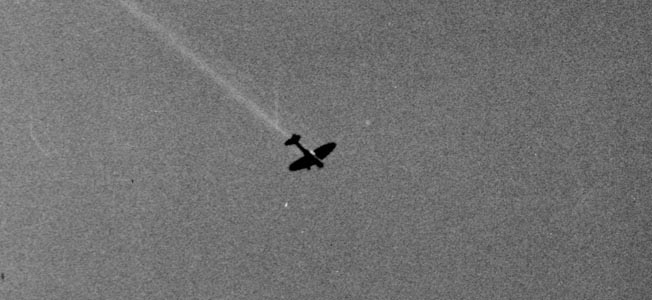
Their first mission began at dawn. Newly promoted Major D.D. Brannon led four planes, each armed with a 500-pound bomb, to attack Japanese barges off the village of Tasimboko. After dropping their ordnance, the P-400s circled around again to strafe enemy troops wading ashore. One pilot later said he and his wingman cut a “bloody X” on the water with their bullets.
Returning to the Cow Pasture for more fuel and ammunition, the Airacobras took off for another sortie over Tasimboko two hours later. This became their daily routine, flying attack missions from dawn to dusk.
Thus was born the moniker of the “Jagstaffel,” a corruption of the German word for fighter squadron. Sometimes flying five runs a day, the 67th went after the Tokyo Express with as many aircraft as their hard-working ground crews could get operational. Whenever barge hunting proved fruitless, the Jagstaffel made low-level strikes against Japanese troop concentrations and supply dumps in support of Marines on the ground.
These close air support missions, unglamorous and decidedly dangerous to fly, gave the squadron a new sense of purpose. They were contributing at last and in a way that directly aided the 1st Marine Division’s fight to hold Guadalcanal.
The Resurrection
In early September, Japanese efforts to retake Guadalcanal increased dramatically. Almost every night transports unloaded thousands of soldiers while Japanese warships bombarded U.S. positions mercilessly. Fuel depots and parked aircraft burst into flames while terrified men huddled in their foxholes, sweating out the barrages. All signs pointed to a major enemy counterthrust, but when would the Japanese attack?
Meanwhile, the Jagstaffel tried to cope with conditions on the hellish island. Enemy action notwithstanding, the poor food and jungle diseases began to take their toll. Typhus, carried by huge rats, was a constant threat. Ferocious mosquitos infected many men with malaria, and a steady diet of cold rice and tinned sardines often resulted in crippling dysentery.
Clothing, shoes, and equipment quickly rotted in the fetid jungle environment. A blazing sun pushed daytime temperatures into the 90s while driving tropical rains turned runways, roads, and bivouac areas into muddy quagmires. One Marine observed that Guadalcanal was “the only place on Earth where you could stand up to your knees in mud and still get dust in your eyes.”
Supply shortages, especially aviation gas, often curtailed operations. Once when Cactus ran out of bombs the 67th resorted to dropping contact fused depth charges wrapped in lengths of chain. Without spare parts or proper tools, mechanics struggled constantly to keep their P-400s flying. As the squadron history noted, “Every airplane in commission soon became an example of the ground crew’s ingenuity and resourcefulness.”
Wrecked planes normally became a source of replacement parts, but on Guadalcanal the need for serviceable aircraft grew so great that extraordinary measures frequently had to be taken. When one Airacobra cracked up on landing, maintenance personnel decided to rebuild the aircraft instead of scrapping it. Replacing the crumpled wing with one off a derelict P-39, mechanics more or less balanced a set of recycled propeller blades by pouring molten lead into them until they felt right. Christened The Resurrection, this battered Bell continued to operate over Cactus for months.
“They’re Testing, Just Testing”
Unknown to the Jagstaffel, 2,400 battle-hardened Japanese soldiers commanded by Maj. Gen. Kiyotake Kawaguchi were slowly moving into assault positions along the American perimeter. The tempo increased; seemingly every night there was a naval barrage while “Tojo Time” brought with it an inexhaustible rain of enemy bombs. One 1,000-pounder nearly buried Major Brannon alive on September 12, when it exploded five feet from his command bunker. Badly wounded by a shrapnel fragment, Brannon hastily turned command of the 67th over to Captain Thompson before boarding an outbound transport plane for medical treatment.
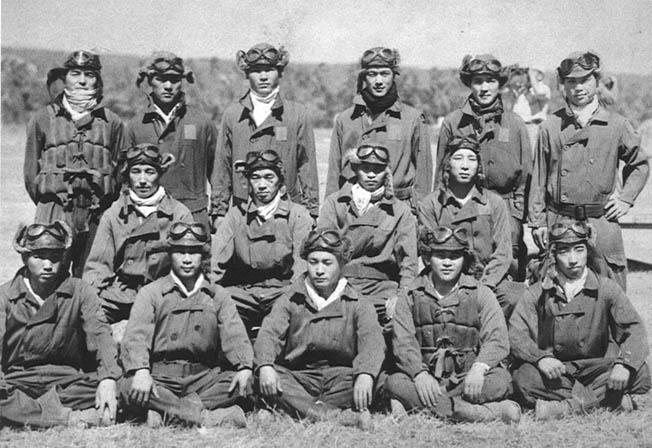
That night Washing Machine Charlie dropped flares to mark American lines, signaling the start of another naval bombardment. Instead of targeting Henderson Field as usual, this barrage pummeled American positions on a grassy ridge 1,700 yards to the south. Once the warships ceased fire, riflemen from Kawaguchi’s 35th Brigade began moving forward to take that key terrain feature.
Leathernecks from the 1st Marine Raider Battalion and 1st Parachute Battalion blunted these probing attacks, but Lt. Col. Merritt A. “Red Mike” Edson, commanding the American defense, knew more were coming. “They’re testing, just testing,” Red Mike advised. “But they’ll be back.”
After dark on the 13th, the Japanese struck again, their relentless assaults slowly pushing Edson’s hard fighting Marines halfway back across the ridge. American artillery and mortars hammered Kawaguchi’s men, yet still they came on. The situation had turned critical. Vandegrift fed his last reserves into the fight and prepared for the worst. If the enemy captured Edson’s Ridge, as this knoll came to be known, they could then seize the airfields and finally retake Guadalcanal.
Breaking Up a Japanese Assault
Around 3 am on September 14, Captain John Thompson of the 67th Fighter Squadron was awakened and told to report for orders at the Pagoda. There he met a bloody, begrimed Marine officer from Edson’s headquarters who sought his help.
Thompson later recalled the scene: “He grabbed a pencil and a scrap of paper and drew a rough diagram of the ridge showing the positions of both sides. He said the Japanese were expected to make a big push at daybreak.” The 67th had to stop them. There was enough fuel left for three Airacobras. Thompson, along with Lieutenants B.E Davis and Bryan Brown, took off at dawn, circled the field, and dove down to attack.
According to Thompson, “We came in low over the trees, pulled up and saw the Marine positions. In the clearing below were hundreds and hundreds of Japanese, ready to charge. I lowered the nose, pressed the trigger and just mowed right through them. The next two pilots did the same thing.”
Enemy return fire damaged Brown’s P-400, so he used the momentum of his dive to pull away and land deadstick on Fighter One. Thompson and Davis banked around for another run, every moment of which was visible to the 67th’s mechanics watching from less than a mile away. More of Kawaguchi’s infantry fell under their chattering guns, but this time Thompson took hits to his plane’s radiator and had to break off. Davis continued to strafe until his ammunition trays ran empty.
The desperate airstrike broke up what was to be the enemy’s final assault. As surviving Japanese riflemen withdrew into the jungle, Edson’s Leathernecks took time to reorganize and reinforce their positions. The Marines, with help from the Army Air Forces, had held. Officers later counted the bodies of 600 dead enemy soldiers below Edson’s Ridge, many of them felled by the Airacobras’ gunfire.
Afterward, General Vandegrift met Thompson and said, “You won’t read about this in the newspapers, but you and your flight of P-400s just saved Guadalcanal.” Vandegrift then slipped a bottle of scotch into the pilot’s pocket, a much appreciated reward for the work he had just done.
Both Brown and Davis received Silver Stars for their role in this mission. As flight leader, Thompson was awarded the Navy Cross, one of only 11 Army Air Forces personnel to receive this decoration during World War II. Those who were there insist all three pilots deserved the Medal of Honor.
Final Victory at Guadalcanal
The defeat of Kawaguchi’s detachment did not mark the end of combat on Guadalcanal. Twice more, in October and November, large Japanese forces steamed toward Cactus intent on evicting the Americans from their island lodgment. On the night of October 13, two Japanese battleships hurled over 1,000 14-inch shells into the U.S. perimeter, wreaking incredible destruction while transports put ashore another 10,000 Japanese soldiers. Later that month those infantrymen attacked American lines only to be stopped cold by Vandegrift’s weary Marines, reinforced now by a regiment of fresh Leathernecks and 4,000 U.S. Army troops, the first of many soldiers to arrive on Guadalcanal that autumn.
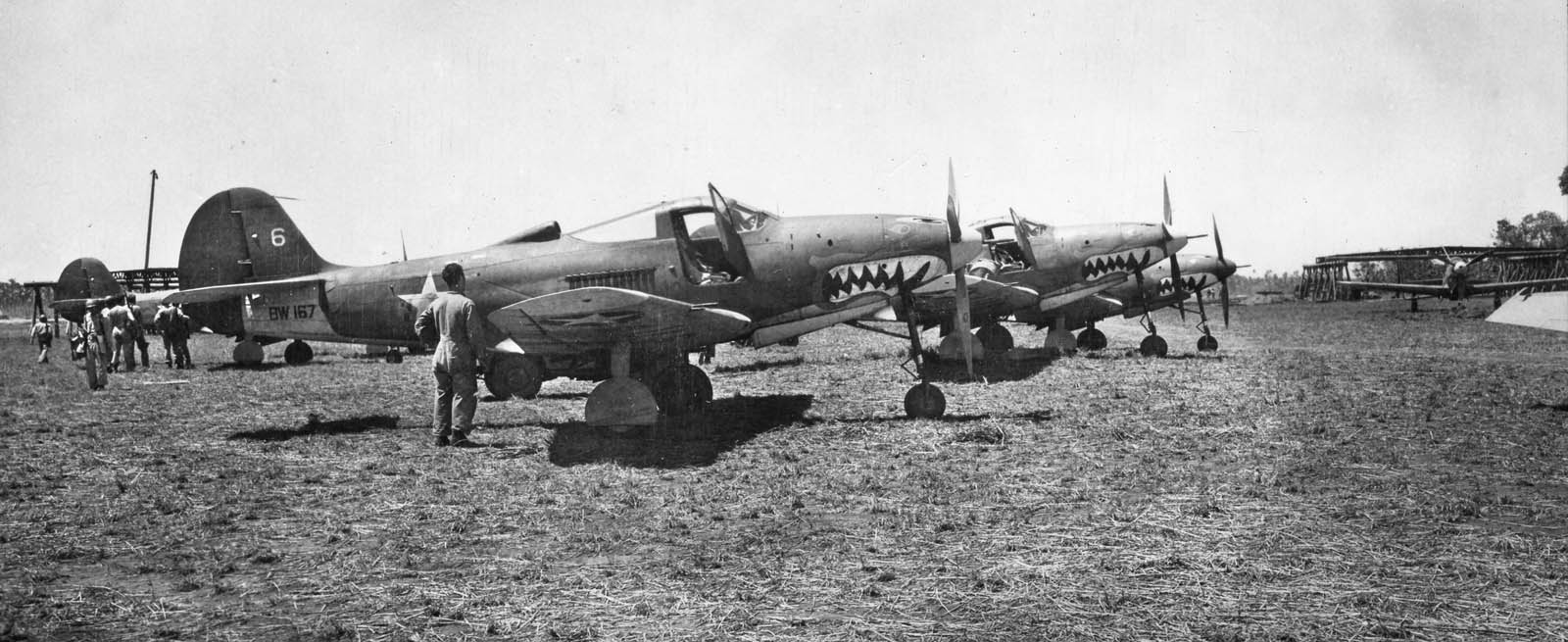
Help for the Cactus Air Force arrived as well. New model P-39 Airacobras, fitted with proper oxygen systems, began replacing the worn out klunkers, while fresh-faced pilots reported to learn the dangerous business of aerial combat. In November, the Fighting Cocks joined Navy and Marine aircrews as they pounded the Japanese battleship Hiei, caught off Savo Island as part of a final naval offensive against Guadalcanal. Mortally wounded by torpedoes, bombs, and gunfire, the Hiei was scuttled—much like Japan’s dream of victory in the Solomons.
While victory was still a long way off, a growing number of American aviators flying increasingly capable warplanes began carrying the fight back toward Tokyo. Yet, the 67th Fighter Squadron, battling against incredible odds in an aircraft totally unsuited for its task, can take credit for being there from the start—when guts, ingenuity, and stubborn determination began to turn the tide in the skies of the Pacific.
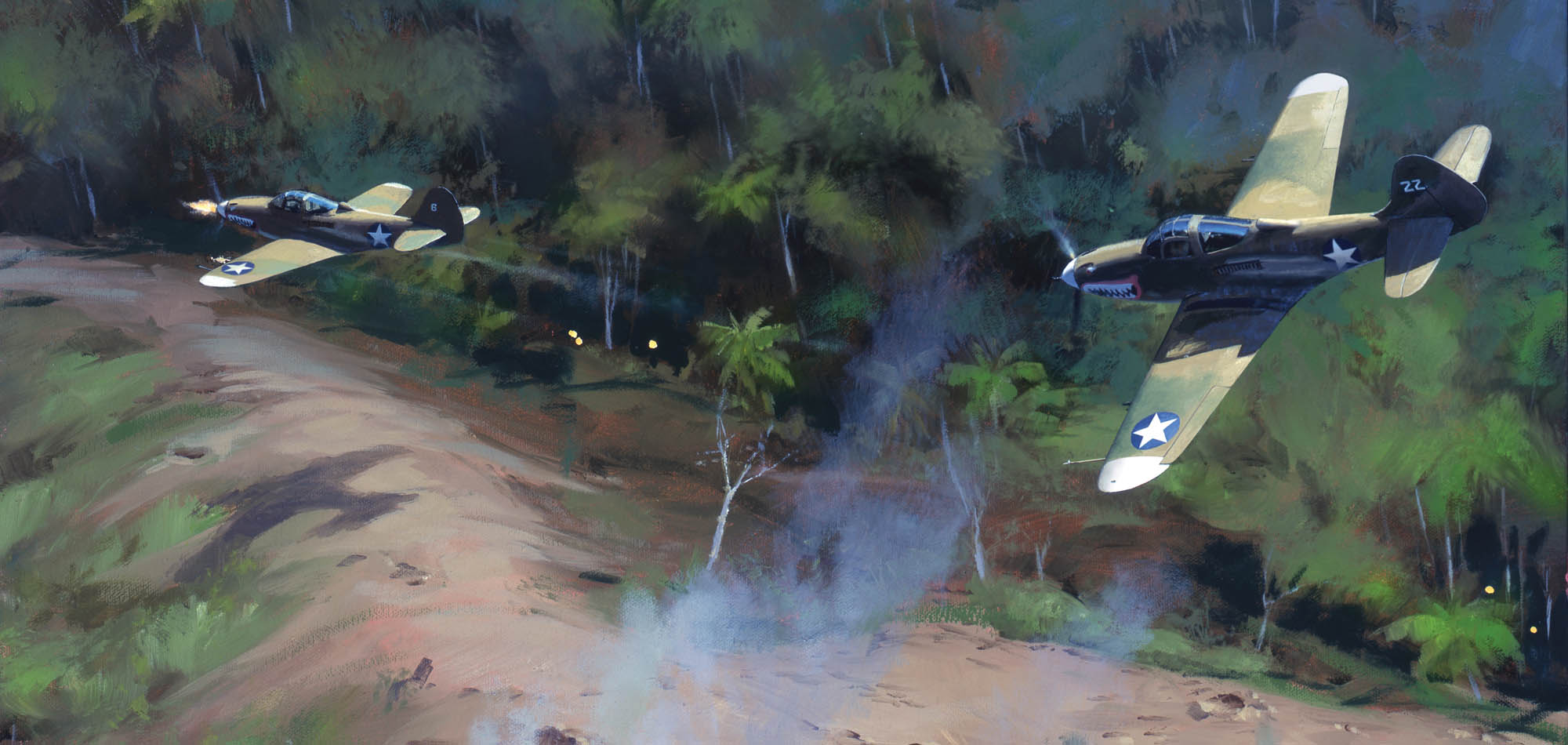
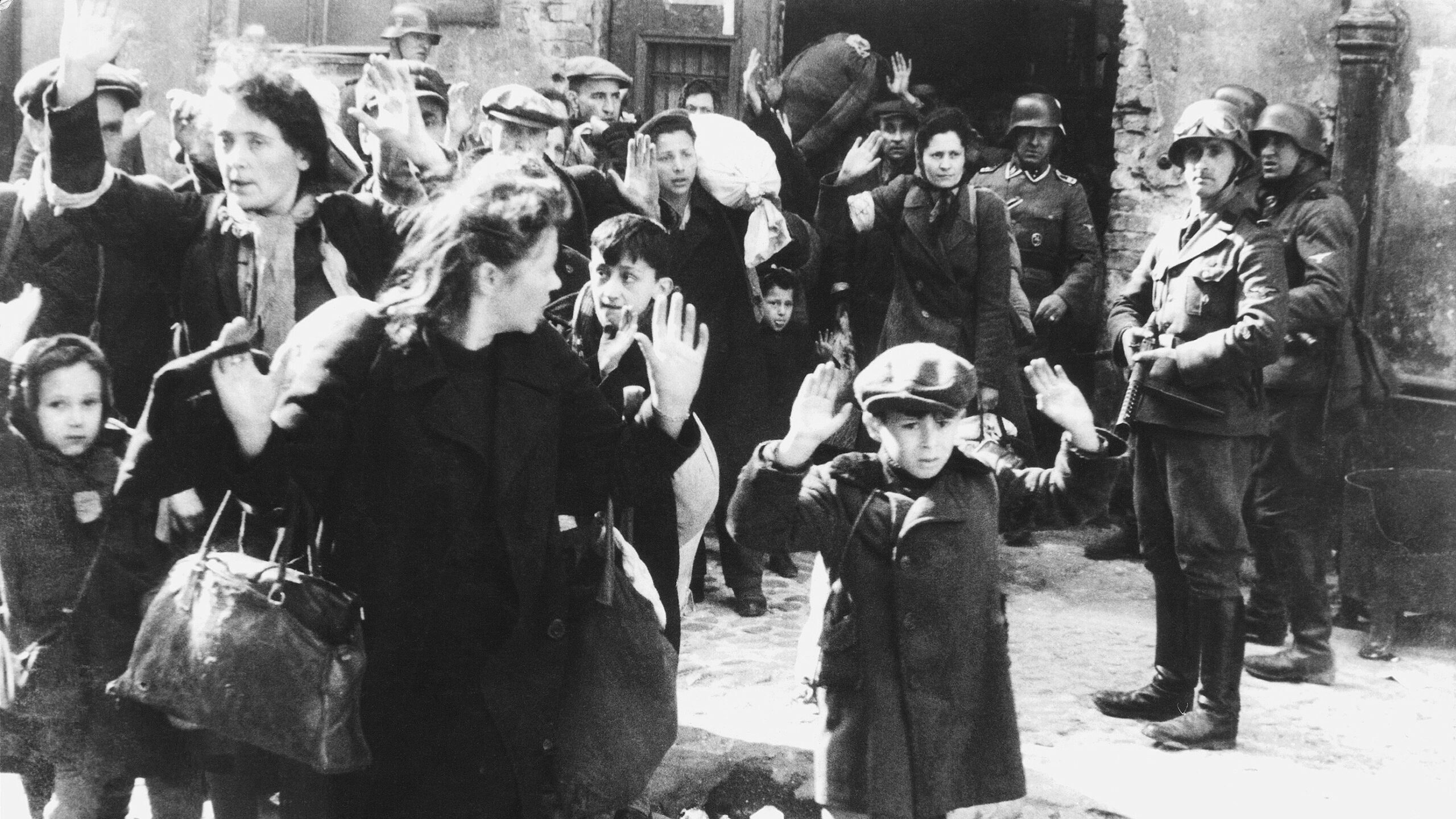
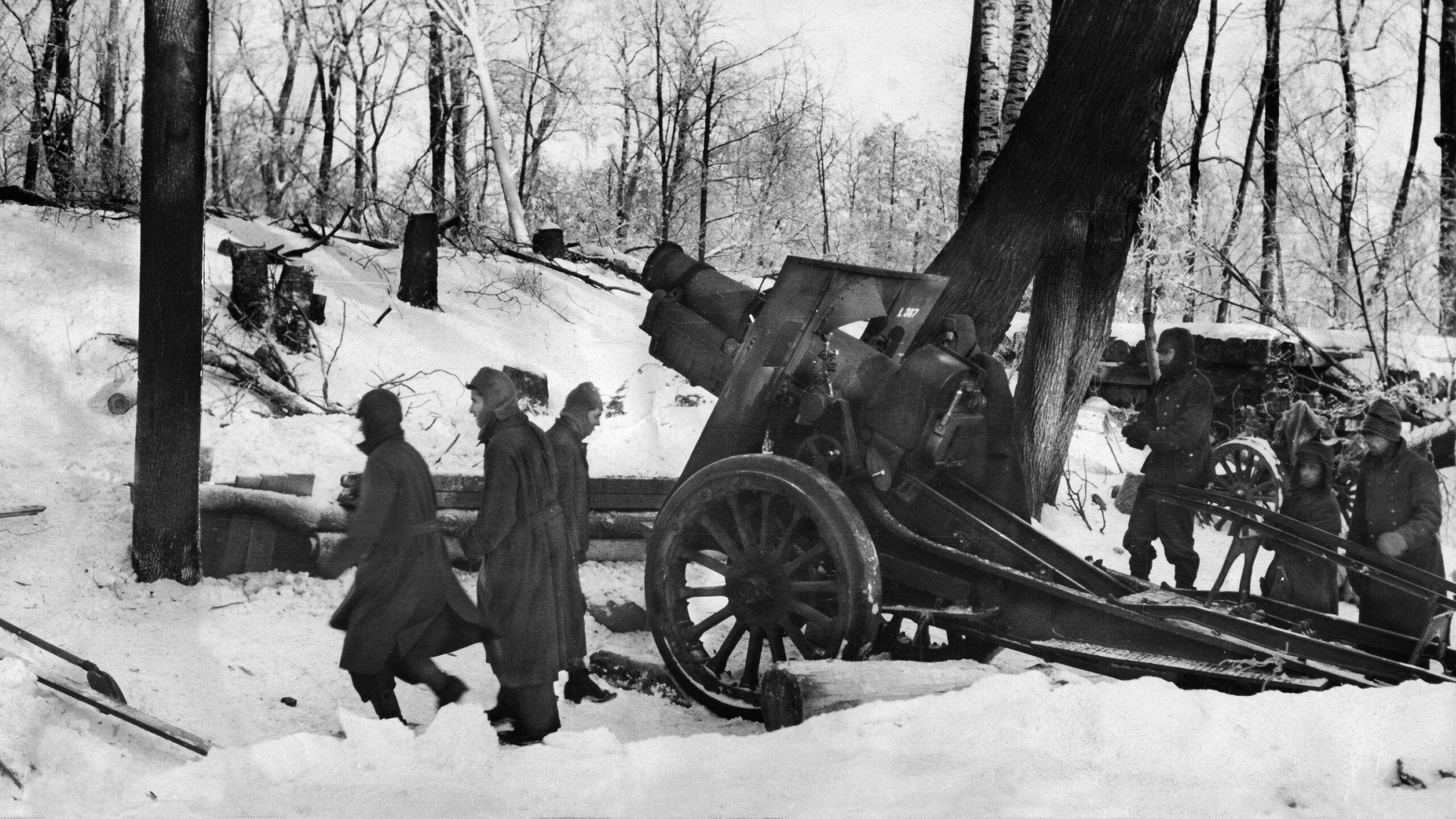
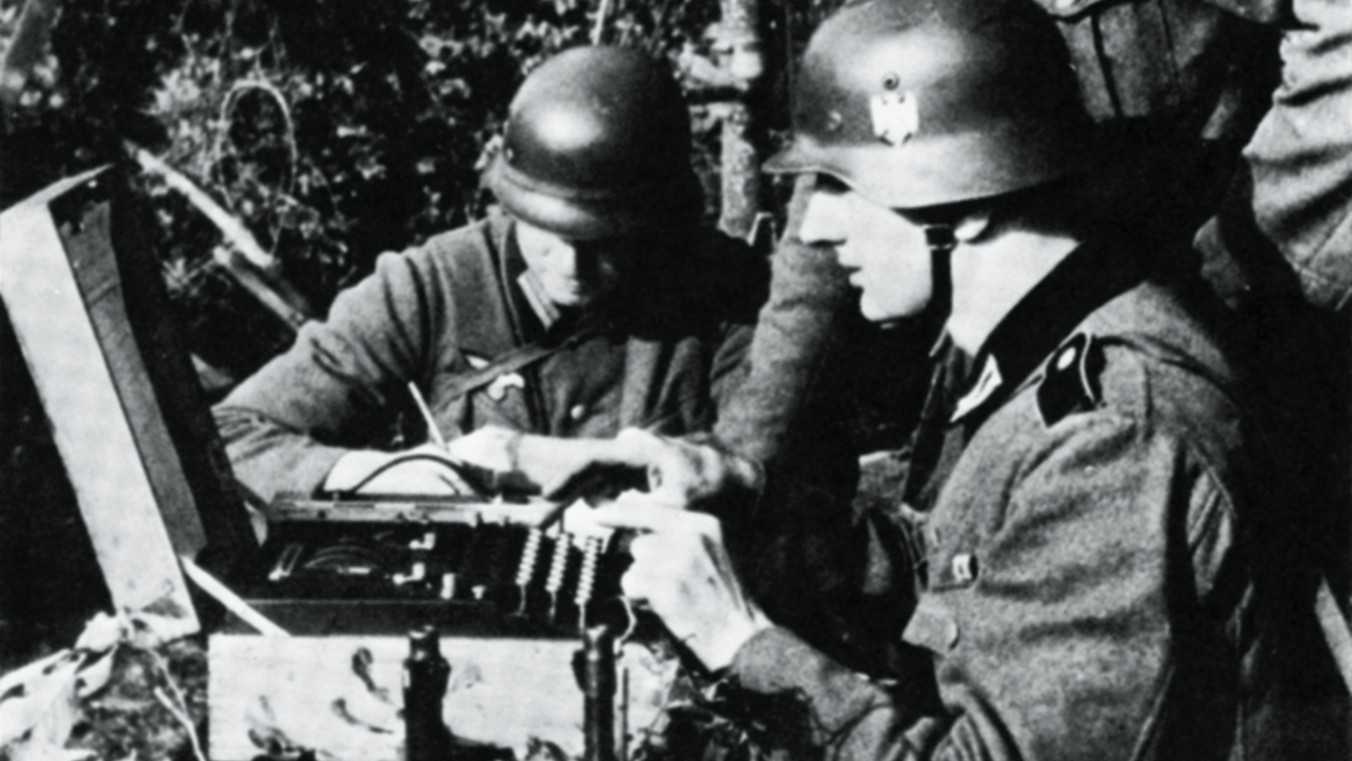
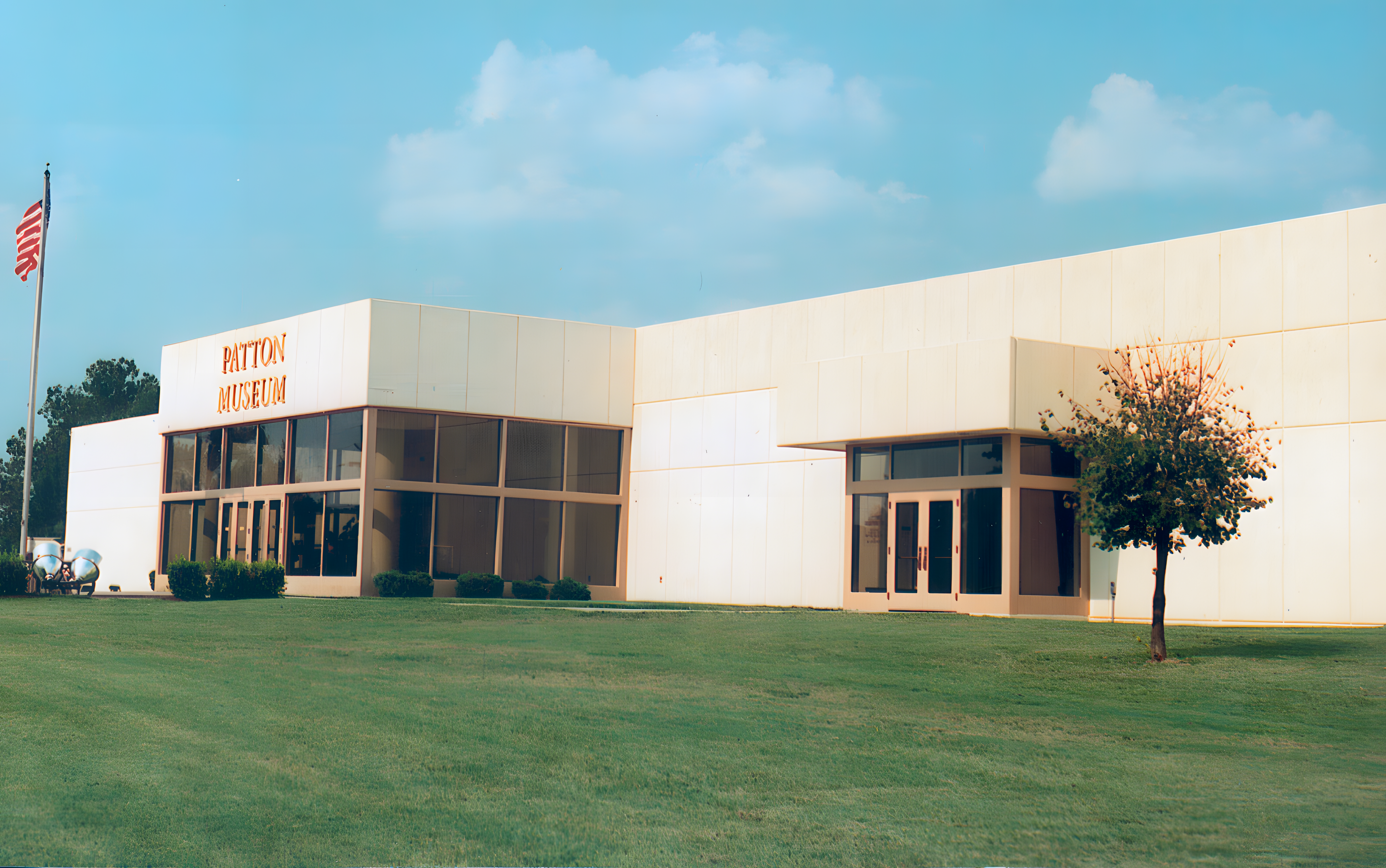
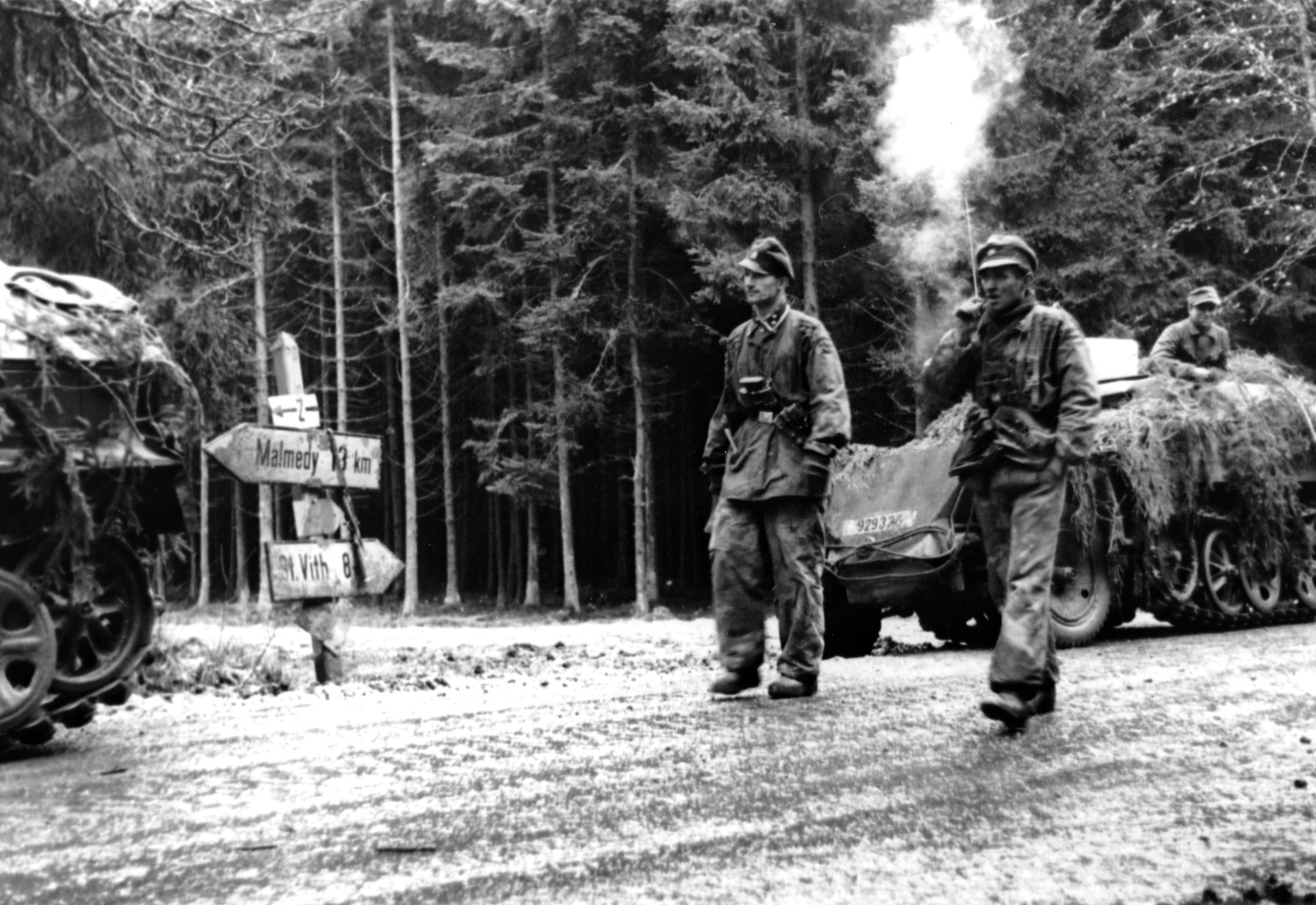
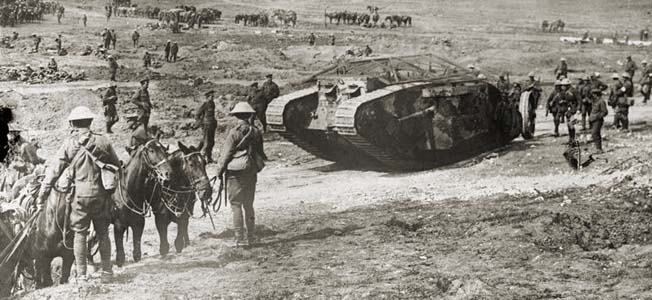
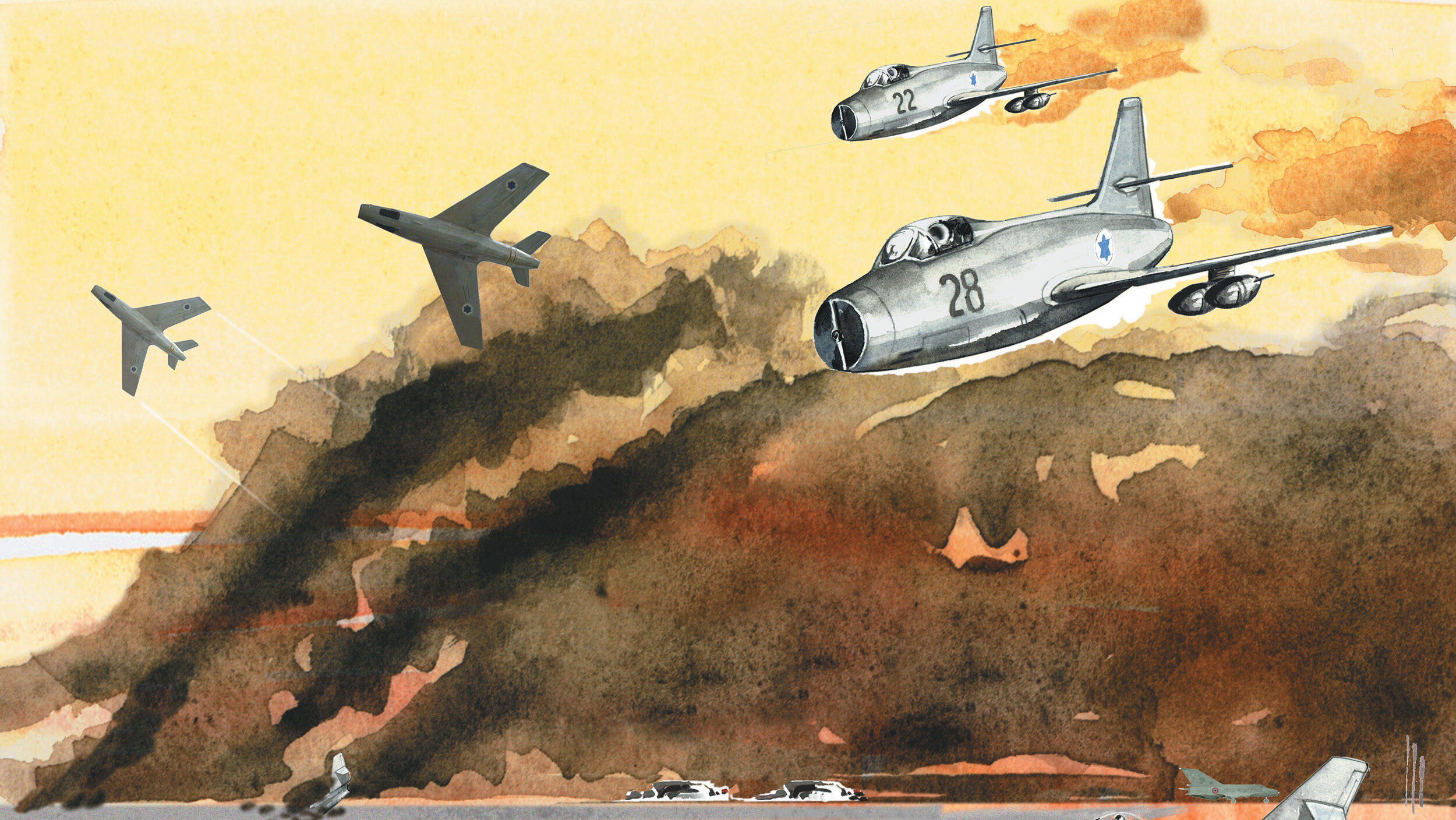
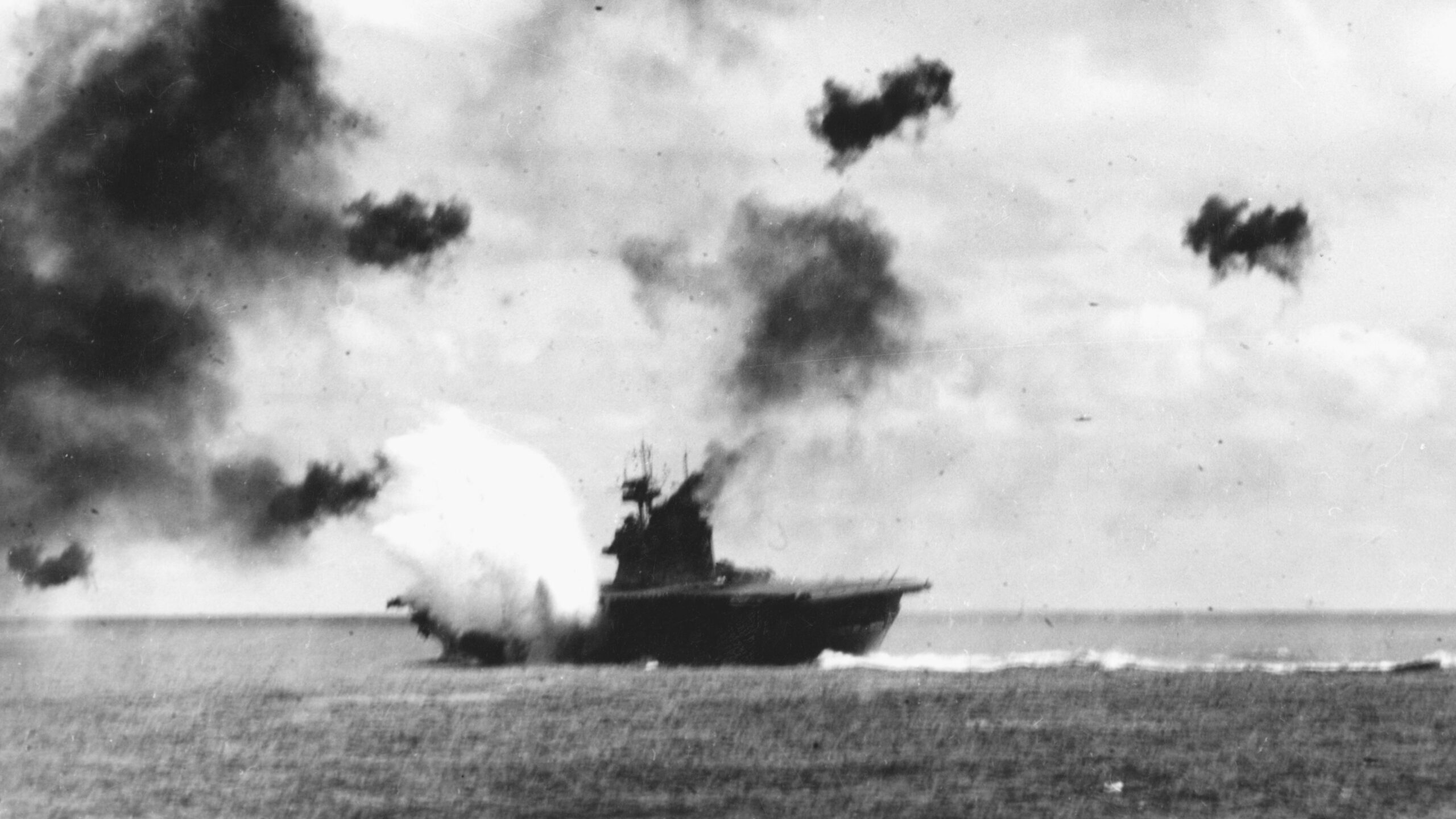
ABSOLUTELY AMAZING ARTICLE. I LOOK FORWARD TO READING MORE. MUCH APPRECIATION FOR YOUR GREAT HISTORICAL EFFORTS!
The Allison V-1710 had a gear driven, single speed supercharger (all aircraft engine gear driven superchargers were TURBO superchargers because of their compressive efficiency), installed at the back of the engine block, in all models, including those built for the P-39 and the P- 40, only a high compression version built ( but never used ) for US Navy dirigibles came with no supercharger ( because the dirigibles rarely flew above 500 or 6000 ft).
What the Bell and Curtiss version did NOT have, however, was the General Electric EXHAUST DRIVEN turbo supercharger (now known as a “turbocharger”) installed on the P- 38 Allison V- 1710’s, the B-17 Wright R- 1820’s, the B-24 and P-47 Pratt and Whitney R- 1830’s and R- 2800’s. In all those engines, radial or V type, a GEAR DRIVEN turbo suoercharger was used as the second stage in the system, with an intercooler, to provide best efficiency.
A little known deployment for the P-39 ( and the P-38) was in Iceland, BEFORE the U S had officially entered WW 2. The U S Army Ground and Air Forces were based in Iceland to prevent a suspected German invasion, replacing a USMC Provisional Brigade, also deployed before the U S entry, which ha, in turn, replaced a British defense force,in early 1941. The British Force arrived after the German conquest s of France, Norway and Denmark, they left to be deployed in the Middle east and Africa; and the Marines left (after Pearl Harbor) to be deployed in the Pacific. Both aircraft had tricycle landing gear and photographs show them parked on their hardstands surrounded by snow.
The P-39’s were assigned the lower altitude air defense role, while the P- 38’s handled the higher altitude patrols. At the time, German aircraft were conducting reconnaissance flights, and at least one Focke -Wulf Condor four engined patrol plane was shot down by an intercepting P – 38.
By mid way through the War in the Atlantic, Iceland was a major base for anti submarine warfare and trans Atlantic flights (Operation Bolero), and most of the road,harbor and airfield infrastructure in Iceland was developed at this time; ready for the coming tourist and air travel industries after the war.
In the Pacific, 37mm cannon, salvaged from unreparable P-39’s, were installed on US Navy PT boats, increasing their capability against Japanese coastal barge and landing craft traffic in the Solomons.
Leonard Horn great explanation and clarification. Interestingly I have read that it was the airframe manufacturer that integrated the Turbosupercharger installation, too bad neither Bell or Curtis tried it. But Lockheed and Republic did.
Actually, it was the Army Air Corps top brass that ordered the removal of the turbochargers from the production P-39’s design. It was not Bell Aircraft’s idea.
The P-39 was also exported to Russia where it was a very effective ground support weapon, especially against tanks. For air encounters against the Germans, Russian pilots preferred the home grown YAK fighters.
Actually, the Russians used the P-39s as fighters as on their front air combat took place under 10K feet. Indeed, several of Russia’s highest-scoring pilots achieved most of their kills using P-39s. The myth of P-39s flying ground support is largely based on the US experience against the Japanese and mistranslating of the Russian term for” fighter”.